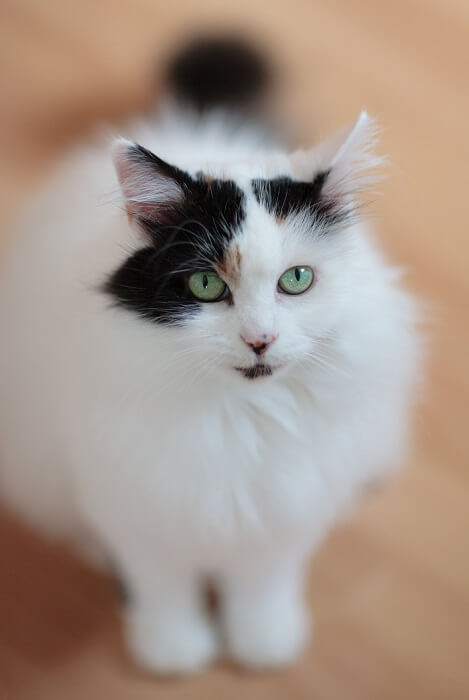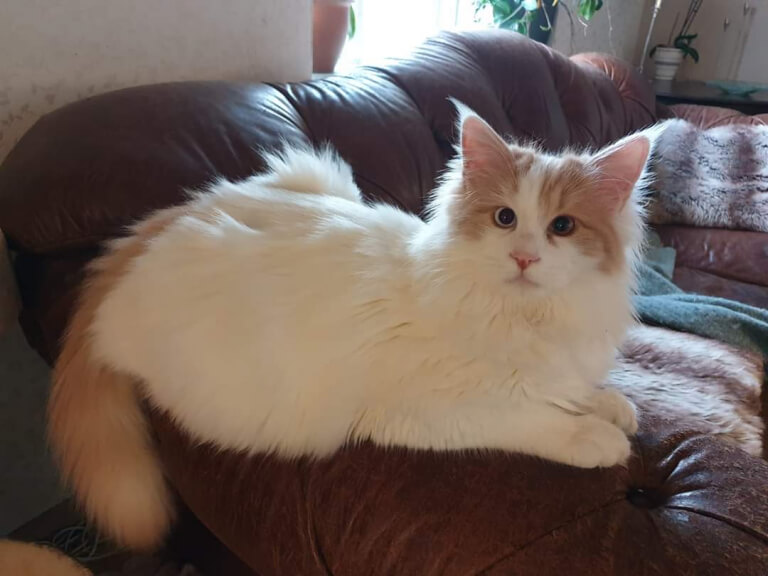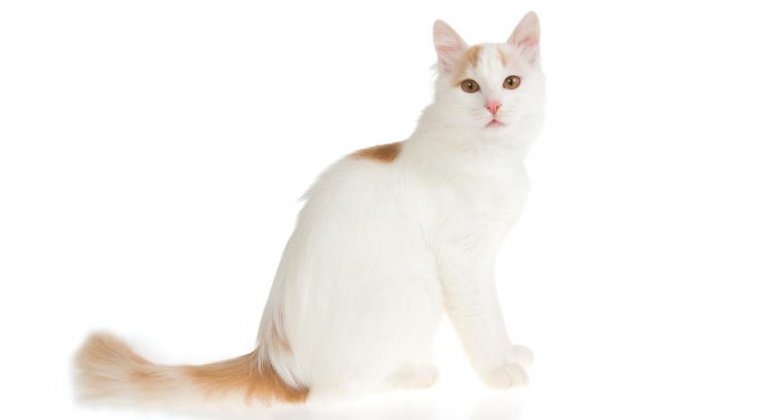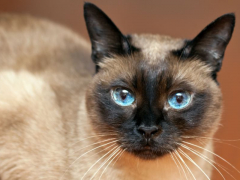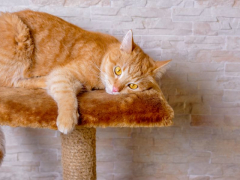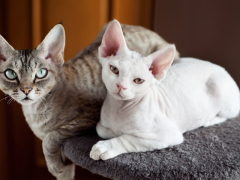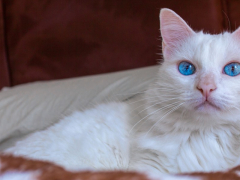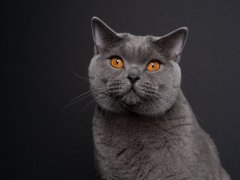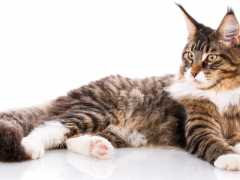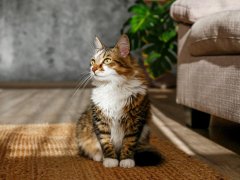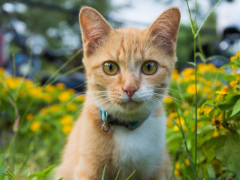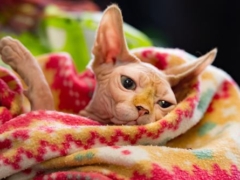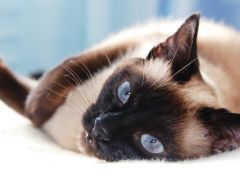Personality and Temperament
Gorgeous kitties with cashmere soft coats, Turkish Van cats are renowned for their fun-loving personalities and their often quirky behaviors.
If you're thinking about bringing a Turkish Van cat into your family, be sure that you have plans for keeping this intellectual kitty entertained. These cats don't do well when left alone for long periods of time; however, they do get along very well with other animals and can form strong bonds with dogs as well as with their fellow felines.
While Turkish Van cats can be child-friendly when kids behave appropriately, they do have boundaries. They prefer fun, active interactions rather than too much holding and cuddling, and they will not tolerate hair pulling or any other form of mishandling. Despite having a slight aversion to too much handling, they sometimes choose to relax on a favorite person's lap for some well-earned TV time, and they like to sleep near people they trust.
Anyone who longs for an ultra-friendly cat that loves nothing more than spending time together will probably enjoy life with a Turkish Van. These kitties happily follow their people throughout the house, waiting for an opportunity to help with everything from paperwork to washing dishes.
Since these cats like water, their families often have feline company in the bathroom. If you want to make a Turkish Van cat happy, just leave a faucet running at a slow dribble. Those mesmerizing drips will almost certainly keep them entertained!
Speaking of entertainment, these cats are outstanding jumpers and they really don't like to spend much time on the floor. They absolutely require a tall cat condo and they truly appreciate window seats. Without high, suitable perches, they will make their own space on your tabletop, desk, or china cabinet, perhaps knocking important items to the floor in the process.
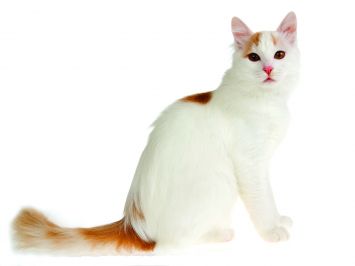
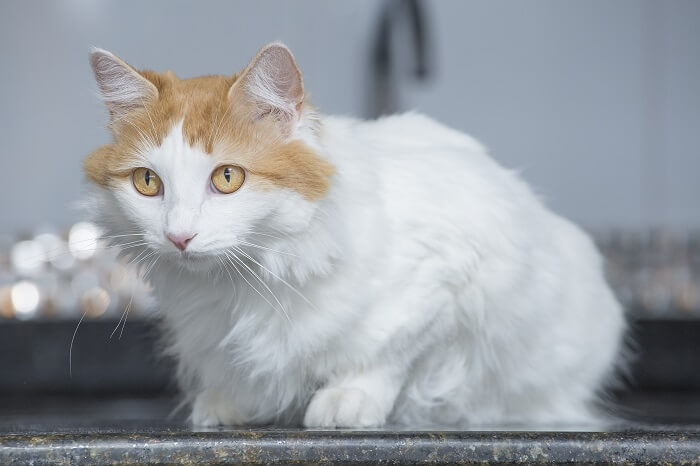
Care
Nutrition
Grooming
Exercise
Health
Turkish Van cats have no special needs, however good nutrition is important. If you're not feeding fresh food, be sure to offer a high-quality commercial brand that focuses on real meat or real fish as the primary ingredient. Consider choosing a brand that incorporates added Omega fatty acids to support healthy skin and a healthy coat.
The Turkish Van cat looks like a high maintenance kitty, but in reality, their soft, cashmere coat requires very little upkeep as it is a single layer. A quick daily once-over with a fine-toothed comb should be enough to prevent tangles. If you live in a colder climate where days get shorter and your cat is exposed to chilly temperatures or lower light, then longer fur might grow over the winter, increasing the need for comb-outs.
Because Turkish Vans are so athletic, it's probably a good idea to keep their claws trimmed short to prevent too much damage to your furnishings. In addition, you'll want to offer routine dental care.
From a young age, teach your cat to be brushed, have their nails trimmed, and have their teeth brushed. This can prevent the stress and discomfort that comes with unnecessary struggles as the cat grows older.
You probably won't have to encourage your Turkish Van cats to exercise. These kitties are natural athletes, with a tendency to seek the highest possible vantage point from which to survey their domain.
Lots of jumping and running helps maintain fitness for a lifetime. These kitties love their toys and have a natural appreciation for interactive games. If you throw a small, soft toy, your cat might be able to catch it in midair and may even bring it back to you for another round of fetch.
Turkish Van cats are typically healthy, with no known genetic defects; however, some do develop hypertrophic cardiomyopathy, which is the most common form of heart disease in cats.
If you happen to adopt a white Turkish Van cat - also known as a Turkish Vankedisi, then there’s a fairly good likelihood that the cat will be deaf, particularly if it also has blue eyes. Even if the cat is not completely deaf, it may have a hearing disorder. This should not cause problems for your kitty, but you’ll need to find nonverbal ways to communicate.
History
The history of the Turkish Van cat begins in 1955, when two British photographers visited Turkey, having been tasked by the Turkish Ministry of Culture and Tourism with promoting travel and publicizing Turkey’s attractions. While they were there, Sonia Halliday and Laura Lushington were given cats with a distinct Van pattern, which became the foundation for the Turkish Van cat breed.
The female cat was from Hatay Province, Iskenderun, and was named Van Iskenderun Guzelli. The male was named Stambul Byzantium, and was given to the breeders by an Istanbul hotel manager.
More cats were acquired in 1959, including a female from Antalya, appropriately named Antalya Anatolia, and a male named Burdur, who came from the city of Burdur.
In 1969, the breed - then known as the Turkish cat - was recognized by the Governing Council of the Cat Fancy (GCCF). Later, the breed was renamed to distinguish its members from the Turkish Angora. Later still, all-white Turkish Van cats - those not displaying the signature pattern that restricts color to the head and tail - were renamed “Turkish Vankedisi.” These cats share everything but the Van coat pattern with their cousins.
In 1977, Lushington wrote a memoir about the first two founding members:
"I was first given a pair of Van kittens in 1955 while traveling in Turkey, and decided to bring them back to England, although touring by car and mainly camping at the time – the fact that they survived in good condition showed up the great adaptability and intelligence of their breed in trying circumstances. Experience showed that they bred absolutely true. They were not known in Britain at that time and, because they make such intelligent and charming pets, I decided to try to establish the breed, and to have it recognised officially in Britain by the GCCF."
In 1982, Turkish Van cats made their way to the US from Britain. It took over a decade for the US-based Cat Fanciers Association (CFA) to grant recognition. Finally - in 1994 - the breed could be registered and shown at CFA events.
The Turkish Van is a natural cat breed, and no outcrossing is permitted; in fact, all contemporary Turkish Van cats can be traced back to the original imports.
On average, CFA registers just 100 new Turkish Van kittens per year, making this one of the rarest cat breeds in the world.
